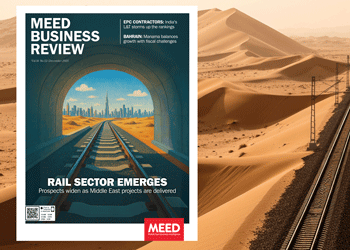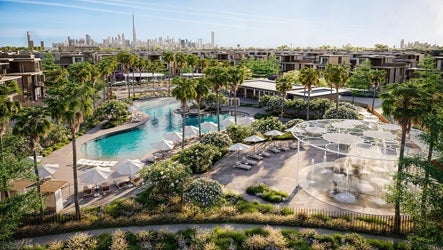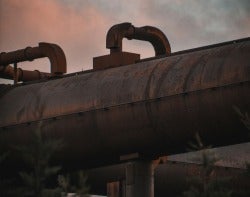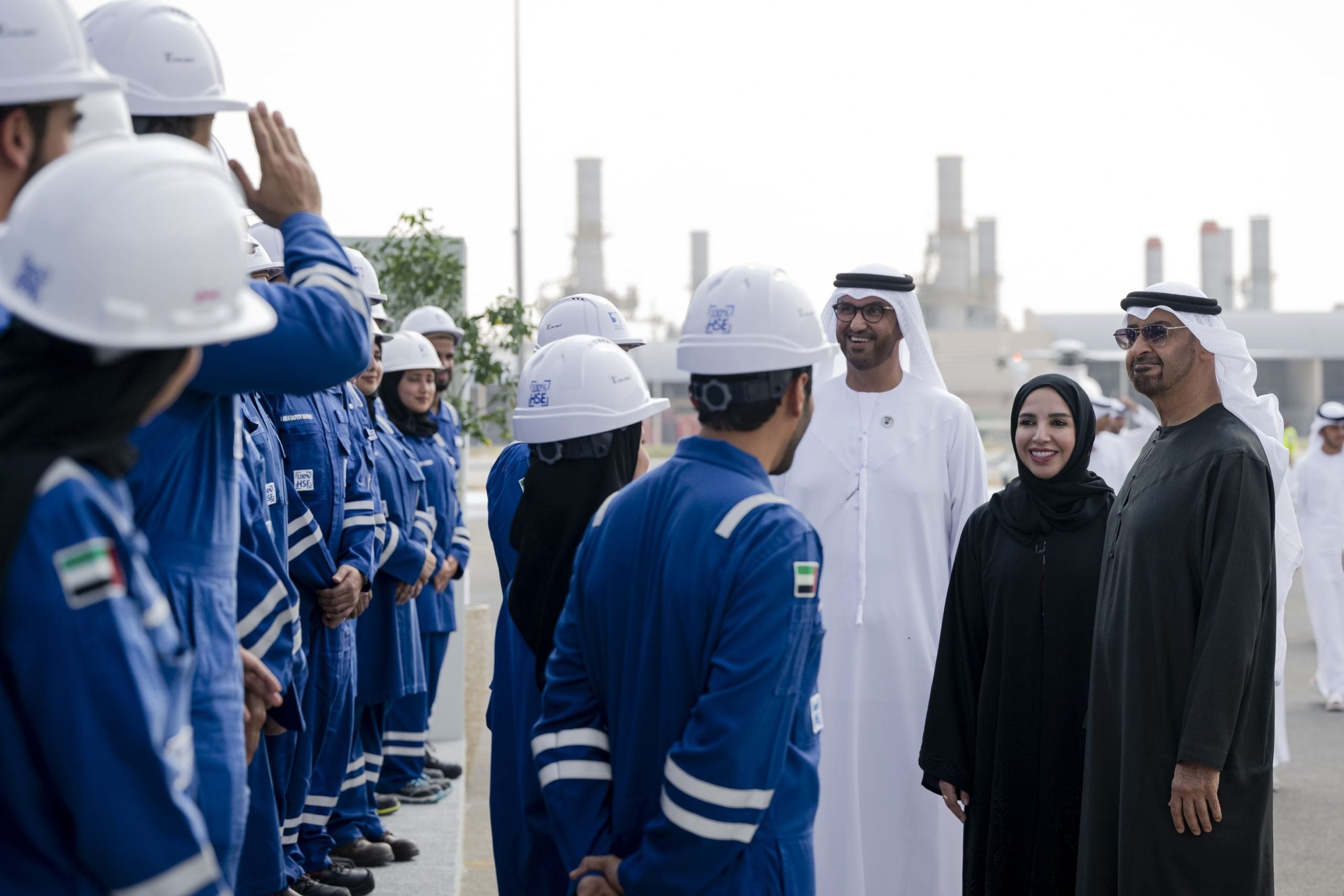Cop28 keeps 1.5°C goal within reach
20 December 2023

The 28th Conference of the Parties of the UN Framework Convention on Climate Change (Cop28), helmed by the UAE’s Sultan al-Jaber, stopped short of recommending the phasing down of fossil fuels, which was on the wish list of half of the countries that ratified the Paris Agreement eight years earlier, and which were present at the 2023 climate summit in Dubai.
However, the conference scored a major victory by referencing, for the first time since Cop started, the need to transition away from fossil fuels to keep the 1.5-degree-Celsius temperature goal alive.
With few exceptions, the Cop28 UAE climate agreement – or the UAE Consensus, as Al-Jaber prefers to call it – has been described by world leaders as historic.
The UN Framework Convention for Climate Change said the agreement signals the “beginning of the end of the fossil fuel era by laying the ground for a swift, just and equitable transition, underpinned by deep emissions cuts and scaled-up finance”.
“We are standing here in an oil country, surrounded by oil countries, and we made the decision saying let’s move away from oil and gas,” Denmark’s Climate & Energy Minister, Dan Jorgensen, said after the final climate text was adopted on 13 December.
Phasing down or out
After campaigning for the final text of the agreement to exclude the phasing down or phasing out of fossil fuels, reports say that Opec member Saudi Arabia appears satisfied with the outcome.
According to a report by Reuters, Saudi Arabia views the agreement as akin to a menu that allows every country to follow its own pathway to the energy transition.
Opec members account for close to 80 per cent of the world’s proven oil reserves, along with about a third of global oil output. Phasing fossil fuels out threatens the members that have not yet diversified their economies away from oil revenues.
As expected, the least-developed countries and islands that are most vulnerable to climate change wanted more from the Cop28 agreement.
“It reflects the very lowest possible ambition that we could accept, rather than what we know, according to the best available science, is necessary to urgently address the climate crisis,” said Senegal’s Climate Minister, Madeleine Diouf.
“The agreement highlights the vast gap between developing-country needs and the finance available, as well as underscoring rapidly dwindling fiscal space due to the debt crisis,” she explained. “Yet it fails to deliver a credible response to this challenge.”
Despite opposing views, various research and studies, including those conducted by the International Panel for Climate Change, confirm that human activities – with burning fossil fuels at the top of that list – contribute to global warming to a huge extent.
Taking the carbon from the environment, or replacing fossil fuels with non-carbon emitting alternatives, are seen as a key solution to keep the ocean levels from rising as icebergs dissolve, or to avoid extreme weather events such as droughts or flooding.
Some experts say that even the 1.5-degree-Celsius target will not entirely rule out the more frequent occurrences of catastrophic events, based on today’s environmental scenario, when the temperature is estimated to be at 1.06 degrees Celsius above pre-industrial levels.
In September, for example, thousands of lives were lost in Derna, Libya, when a storm swept through the region. Experts said Storm Daniel drew energy from extremely warm seawater in the Mediterranean, causing unexpected heavy rainfall that overwhelmed two dams in the area.
Phasing fossil fuels out threatens Opec members that have not yet diversified their economies away from oil revenues
Next steps
Beyond the initial reactions and responses, many agree that the Cop28 text will provide momentum for a global energy transition, and will have a fair impact on hydrocarbons-producing countries in the Gulf.
A Dubai-based consultant focusing on energy projects and investments tells MEED: “It is a step in the right direction, and if the implementation leads to positive gains, it will allow confidence to deepen.
“There is a lot of talk about how it is watered down with regards to fossil fuel use, but we need to give the Middle Eastern countries the time to transition to new revenue sources, otherwise we only bring economic fragility to an already politically fragile region,” the consultant adds. “That is in nobody’s interest.”
The consultant warns against using the text as an excuse to put new money into polluting projects, however. “We need a more robust methodology for new capital commitment to ensure that it goes into clean projects,” she notes.
Karen Young, a senior research scholar at the Centre on Global Energy Policy at Columbia University in the US, agrees. “I think the final language was obviously a concession to oil and gas producers, but also a push to make them more accountable,” she says.
The language implies a shift in demand. “Gulf producers reason that they will be able to meet the tail-end of that demand curve more efficiently and with fewer emissions than their competitors,” adds Young.
“That logic has not changed, and the timeline is, of course, totally dependent on technology, finance and how quickly and in what geographies that demand curve moves.”
Over the short term, the Cop28 agreement is not expected to result in any real change to the Gulf economies, except in terms of domestic infrastructure, where momentum will likely grow for more renewables deployment; more carbon capture, utilisation and storage (CCUS); and new investment in – and export of – liquefied natural gas, ammonia and hydrogen.
There will also be continued competition for market share and market management of oil, according to Young.
Loss and damage
The call to transition away from fossil fuels was not the only accomplishment at Cop28.
The agreement called on the parties to contribute to tripling renewable energy globally and doubling the global annual rate of energy efficiency improvements by 2030, as well as accelerating efforts towards the phase-down of unabated coal power.
It also rallied the parties to reduce methane emissions and accelerate zero- and low-emission technologies, including renewables, nuclear and abatement and removal technologies such as CCUS, particularly in hard-to-abate sectors, as well
as in the production of low-carbon hydrogen.
Equally important, Cop28 managed to secure $89bn in pledges covering climate finance, local climate action and the Loss and Damage Fund.
Lisa Jacobson, president of the US-based Business Council for Sustainable Energy, tells MEED that the agreement on the Loss and Damage Fund early in Cop28 demonstrated a commitment by governments to assist the most vulnerable countries as they cope with the impacts of climate change.
Jacobson, like many others, expects the pledges – which some analysts say equate to only about 0.2 per cent of the necessary funding – to grow in time.
Unlike the funds that focus on climate mitigation and adaptation projects, the Loss and Damage Fund addresses the needs of communities or countries that have already sustained economic losses due to extreme weather events like floods, droughts or wildfires.
“The Loss and Damage Fund operationalisation has been critical … other financing pledges have also been important,” says Jessica Obeid, a partner at New Energy Consult. “Yet the critical factors are the processes [for] eligibility, among others, which remain to be seen, along with moving from pledges to commitments and disbursements.
“In all cases, the commitments still fall short of the required financing for climate change mitigation and adaptation measures.”
The next step for Cop will have to include developing transparent eligibility and allocation criteria and simplified application processes, as well as building domestic capacity, says Obeid. “Leveraging further financing is also key, and may require institutional and technical assistance.”
Cop28 secured $89bn in pledges covering climate finance, local climate action and the Loss and Damage Fund
Coalition of the willing
Despite Cop28’s historic substance and intent, a healthy dose of cynicism remains. “Cop has been around for nearly 30 years, yet emissions have continued to increase year after year,” a UAE-based business leader tells MEED.
From this vantage point, the forging of a coalition of the willing – or several coalitions of the willing – could be the best way to deliver the energy transition without exceeding the 1.5-degree-Celsius temperature goal.
An example of this is the more than 125 countries that have signed on to the pledge to triple renewable energy capacity globally and double the energy efficiency improvement rates by 2030. While such agreements are non-binding, a willing coalition will help encourage others to pursue those pledges.
“That is an example of a coalition having a strong impact and working effectively to elevate the issue they are advocating for, and creating a platform for countries and stakeholders to identify emission reduction and adaptation strategies,” concludes Jacobson.
Exclusive from Meed
-
 Regional rail industry emerges
Regional rail industry emerges8 December 2025
-
 Visa agrees to support digital payments in Syria
Visa agrees to support digital payments in Syria5 December 2025
-
 Meraas announces next phase of Nad Al-Sheba Gardens
Meraas announces next phase of Nad Al-Sheba Gardens5 December 2025
-
 Frontrunner emerges for Riyadh-Qassim IWTP
Frontrunner emerges for Riyadh-Qassim IWTP5 December 2025
-
 Adnoc creates new company to operate Ghasha concession
Adnoc creates new company to operate Ghasha concession5 December 2025
All of this is only 1% of what MEED.com has to offer
Subscribe now and unlock all the 153,671 articles on MEED.com
- All the latest news, data, and market intelligence across MENA at your fingerprints
- First-hand updates and inside information on projects, clients and competitors that matter to you
- 20 years' archive of information, data, and news for you to access at your convenience
- Strategize to succeed and minimise risks with timely analysis of current and future market trends

Related Articles
-
 Regional rail industry emerges
Regional rail industry emerges8 December 2025
 Commentary
Commentary
Colin Foreman
EditorRead the December issue of MEED Business Review
The GCC is experiencing a fundamental shift in its approach to rail infrastructure, as it moves from standalone projects to a self-sustaining regional industry. The transition is evident as local, national and regional projects advance across the region.
The first wave of metro systems, in Dubai, Doha, and most recently, Riyadh, have reported stronger-than-expected ridership and demonstrated the viability of mass transit in the Gulf.
Extensions to those networks are planned or under way, including Dubai’s Blue and Gold lines and Riyadh’s Line 2, alongside planned metros elsewhere such as Muscat and Bahrain.
Projects are also planned and already being delivered at the national level. The UAE’s Etihad Rail and Saudi Arabian Railways are leading most of these efforts. The region’s first cross-border project is also progressing with the Hafeet Rail scheme linking the UAE and Oman.
Other cross-border schemes are planned, including high speed links connecting Riyadh with Doha and Kuwait City, and rail links for Bahrain across causeways to Saudi Arabia and Qatar. The ultimate ambition is a GCC Rail network – a project that was reinvigorated by the Al-Ula accords in 2021.
Sustained, simultaneous activity across the GCC is fostering the development of an indigenous regional rail industry. Rather than being executed as isolated endeavours, projects are creating ongoing demand for expertise, personnel and resources within the region.
Project delivery capability will be complemented by the establishment of crucial ancillary services, including fabrication and servicing facilities.
These operations will shift the GCC from a lucrative market for international contractors to a regional hub for the rail industry, capable of servicing and sustaining its growing network.
 READ THE DECEMBER 2025 MEED BUSINESS REVIEW – click here to view PDF
READ THE DECEMBER 2025 MEED BUSINESS REVIEW – click here to view PDFProspects widen as Middle East rail projects are delivered; India’s L&T storms up MEED’s EPC contractor ranking; Manama balances growth with fiscal challenges
Distributed to senior decision-makers in the region and around the world, the December 2025 edition of MEED Business Review includes:
> AGENDA 1: Regional rail construction surges ahead> INDUSTRY REPORT 1: Larsen & Toubro climbs EPC contractor ranking> INDUSTRY REPORT 2: Chinese firms expand oil and gas presence> CONSTRUCTION: Aramco Stadium races towards completion> RENEWABLES: UAE moves ahead with $6bn solar and storage project> INTERVIEW: Engie pivots towards renewables projects> BAHRAIN MARKET FOCUS: Manama pursues reform amid strainTo see previous issues of MEED Business Review, please click herehttps://image.digitalinsightresearch.in/uploads/NewsArticle/15213797/main.gif -
 Visa agrees to support digital payments in Syria
Visa agrees to support digital payments in Syria5 December 2025
Visa and the Central Bank of Syria have agreed on a strategic roadmap that will allow the US-based card and digital payments company to begin operations in Syria and support the development of a modern digital payments system.
Under the agreement, Visa will work with licensed Syrian financial institutions under a phased plan to establish a secure foundation for digital payments.
The early stages will involve Visa supporting the central bank in issuing Europay, Mastercard and Visa (EMV)-compliant payment cards and enabling tokenised digital wallets – bringing the country in line with internationally interoperable standards.
Visa will also provide access to its platforms, including near-field communication (NFC) and QR-based payments, invest in local capacity building and support local entrepreneurs seeking to develop solutions leveraging Visa’s global platform.
“A reliable and transparent payment system is the bedrock of economic recovery and a catalyst that builds the confidence required for broader investment to flow into the country,” noted Visa’s senior VP for the Levant, Leila Serhan. “This partnership is about choosing a path where Syria can leapfrog decades of legacy infrastructure development and immediately adopt the secure, open platforms that power modern commerce.”
The move marks one of the most significant steps yet in Syria’s slow and uneven return to the formal global financial system and carries implications that reach beyond just payments technology.
It lays the groundwork for overturning more than a decade of financial isolation in which Syria has operated largely outside global banking and settlement networks.
Visa’s entry will not erase all existing barriers – as many restrictions remain in force and will continue to shape what is practically possible – but its support signals a reopening of channels that could smooth Syria’s reintegration into financial networks.
The involvement of the US-based payments provider is also a further tacit sign of the US government’s enthusiastic bear hug of the new post-Assad Syrian government under President Ahmed Al-Sharaa.
For investors assessing long-term opportunities, the presence of a globally recognised payments operator will provide reassurance that Syria’s financial system is returning to international norms, and the security and transparency that comes with it.
https://image.digitalinsightresearch.in/uploads/NewsArticle/15207198/main3225.gif -
 Meraas announces next phase of Nad Al-Sheba Gardens
Meraas announces next phase of Nad Al-Sheba Gardens5 December 2025
Dubai-based real estate developer Meraas Holding, which is part of Dubai Holding, has announced the eleventh and final phase of its Nad Al-Sheba Gardens residential community in Dubai.
It includes the development of 210 new villas and townhouses and a school, which will be located at the northwest corner of the development.
The latest announcement follows Meraas awarding a AED690m ($188m) contract for the construction of the fourth phase of the Nad Al-Sheba Gardens community in May, as MEED reported.
The contract was awarded to local firm Bhatia General Contracting.
The scope of the contract covers the construction of 92 townhouses, 96 villas and two pool houses.
The contract award came after Dubai-based investment company Shamal Holding awarded an estimated AED80m ($21m) contract to UK-based McLaren Construction last year for the Nad Al-Sheba Gardens mall.
The project covers the construction and interior fit-out of a two-storey mall, covering an area of approximately 12,600 square metres.
The UAE’s heightened real estate activity is in line with UK analytics firm GlobalData’s forecast that the construction industry in the country will register annual growth of 3.9% in 2025-27, supported by investments in infrastructure, renewable energy, oil and gas, housing, industrial and tourism projects.
The residential construction sector is expected to record an annual average growth rate of 2.7% in 2025-28, supported by private investments in the residential housing sector, along with government initiatives to meet rising housing demand.
https://image.digitalinsightresearch.in/uploads/NewsArticle/15206904/main.jpg -
 Frontrunner emerges for Riyadh-Qassim IWTP
Frontrunner emerges for Riyadh-Qassim IWTP5 December 2025

Saudi Arabia’s Vision Invest has emerged as frontrunner for the contract to develop the Riyadh-Qassim independent water transmission pipeline (IWTP) project, according to sources.
State water offtaker Saudi Water Partnership Company (SWPC) is preparing to award the contract for the IWTP "in the coming weeks", the sources told MEED.
The project, valued at about $2bn, will have a transmission capacity of 685,000 cubic metres a day. It will include a pipeline length of 859 kilometres (km) and a total storage capacity of 1.59 million cubic metres.
In September, MEED reported that bids had been submitted by two consortiums and one individual company.
The first consortium comprises Saudi firms Al-Jomaih Energy & Water, Al-Khorayef Water & Power Technologies, AlBawani Capital and Buhur for Investment Company.
The second consortium comprises Bahrain/Saudi Arabia-based Lamar Holding, the UAE's Etihad Water & Electricity (Ewec) and China’s Shaanxi Construction Installation Group.
The third bid was submitted by Saudi Arabia's Vision Invest.
It is understood that financial and technical bids have now been opened and Vision Invest is likely to be awarded the deal.
The Riyadh-based investment and development company made a "very aggressive" offer, one source told MEED.
In November, the firm announced it had sold a 10% stake in Saudi Arabia-based Miahona as part of a strategy to reallocate capital "towards new and diversified investments".
The company did not disclose which projects the capital might be reallocated towards.
As MEED recently reported, Vision Invest is also bidding for two major packages under Dubai's $22bn tunnels programme in a consortium with France's Suez Water Company.
The Riyadh-Qassim transmission project is the third IWTP contract to be tendered by SWPC since 2022.
The first two are the 150km Rayis-Rabigh IWTP, which is under construction, and the 603km Jubail-Buraydah IWTP, the contract for which was awarded to a team of Riyadh-based companies comprising Al-Jomaih Energy & Water, Nesma Group and Buhur for Investment Company.
Like the first two IWTPs, the Riyadh-Qassim IWTP project will be developed using a 35-year build-own-operate-transfer contracting model.
Commercial operations are expected to commence in the first quarter of 2030.
https://image.digitalinsightresearch.in/uploads/NewsArticle/15206609/main.jpg -
 Adnoc creates new company to operate Ghasha concession
Adnoc creates new company to operate Ghasha concession5 December 2025
Register for MEED’s 14-day trial access
The board of directors of Abu Dhabi National Oil Company (Adnoc Group) has approved the establishment of a new company to operate the Ghasha offshore sour gas concession in Abu Dhabi waters.
The decision to create the new entity, to be called Adnoc Ghasha, was taken during a recent meeting of Adnoc Group’s board in Abu Dhabi, which was chaired by Sheikh Mohamed Bin Zayed Al-Nahyan, UAE President and Ruler of Abu Dhabi.
Adnoc Group owns and operates the Ghasha concession, holding the majority 55% stake. The other stakeholders in the asset are Italian energy major Eni with a 25% stake, Thailand’s PTTEP Holding, which holds a 10% interest, and Russia’s Lukoil, owning the remaining 10% stake.
The Ghasha concession consists of the Hail and Ghasha fields, along with the Hair Dalma, Satah al-Razboot (Sarb), Bu Haseer, Nasr, Shuwaihat and Mubarraz fields.
Adnoc expects total gas production from the concession to ramp up to more than 1.8 billion cubic feet a day (cf/d) before the end of the decade, along with 150,000 barrels a day of oil and condensates. This target will mainly be achieved through the Hail and Ghasha sour gas development project.
In October 2023, Adnoc and its partners awarded $16.94bn of engineering, procurement and construction (EPC) contracts for its Hail and Ghasha project – the biggest capital expenditure made by the Abu Dhabi energy company on a single project in its history.
Adnoc awarded the onshore EPC package to Italian contractor Tecnimont, while the offshore EPC package was awarded to a consortium of Abu Dhabi’s NMDC Energy and Italian contractor Saipem.
The $8.2bn contract relates to EPC work on offshore facilities, including facilities on artificial islands and subsea pipelines.
The Hail and Ghasha development will also feature a plant that will capture and purify carbon dioxide (CO2) emissions for sequestration (CCS), in line with Adnoc’s committed investment for a carbon capture capacity of almost 4 million tonnes a year (t/y). The CO2 recovery plant will have a total capacity to capture and store 1.5 million t/y of emissions from the Hail and Ghasha scheme.
Prior to reaching the final investment decision on the Hail and Ghasha project in 2023, the Ghasha concession partners, led by Adnoc, awarded two EPC contracts worth $1.46bn in November 2021 to execute offshore and onshore EPC works on the Dalma gas development project. The project will enable the Dalma field to produce about 340 million cf/d of natural gas.
https://image.digitalinsightresearch.in/uploads/NewsArticle/15206382/main2754.jpg


